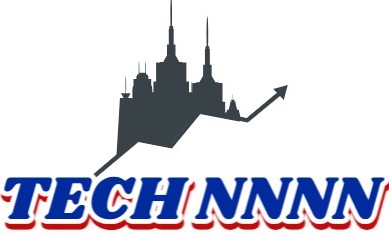Tallyman Axis: The Revolution in Accounting Software

Tallyman Axis represents a significant advancement in accounting software, characterized by its automation and real-time analytics. This platform addresses common inefficiencies in financial management, enabling businesses to streamline their processes. Its user-friendly interface and customizable features suggest a tailored approach to diverse organizational needs. However, the implications of adopting Tallyman Axis extend beyond mere functionality, raising questions about its long-term impact on the accounting landscape. What changes might businesses anticipate as they integrate this system?
Key Features of Tallyman Axis
Tallyman Axis introduces a suite of key features that significantly enhance the efficiency and accuracy of accounting processes.
Its automation capabilities, real-time data analytics, and customizable reporting tools exemplify Tallyman Axis features that cater to diverse accounting needs.
These functionalities translate into Tallyman Axis benefits by streamlining workflows, reducing manual errors, and providing actionable insights, ultimately empowering users to achieve greater financial freedom.
Benefits of Using Tallyman Axis for Businesses
The adoption of Tallyman Axis presents significant advantages for businesses, particularly in financial management.
Its streamlined processes enhance efficiency, while advanced reporting features provide critical insights for decision-making.
Furthermore, the user-friendly interface facilitates seamless navigation, reducing the learning curve for employees.
Streamlined Financial Management
While navigating the complexities of modern financial landscapes, businesses increasingly turn to innovative solutions that enhance efficiency and accuracy in their accounting practices.
Tallyman Axis offers automated invoicing and budget tracking, streamlining financial management. This software minimizes human error, accelerates transaction processing, and provides real-time insights, thereby empowering businesses to allocate resources effectively and respond to market demands with agility and precision.
Enhanced Reporting Features
Enhanced reporting features of Tallyman Axis significantly elevate the analytical capabilities available to businesses.
By leveraging dynamic data visualization, organizations can interpret vast datasets with clarity, facilitating informed decision-making.
Additionally, customizable report templates empower users to tailor their analytics according to specific needs, enhancing relevance and insight.
This combination fosters a data-driven culture, enabling businesses to adapt and thrive in a competitive landscape.
User-Friendly Interface
A user-friendly interface is crucial for maximizing the efficiency of accounting software, as it directly impacts user engagement and productivity.
Tallyman Axis exemplifies design simplicity, enhancing user experience through intuitive navigation and clear layouts.
This streamlined approach minimizes the learning curve, allowing businesses to harness the software’s capabilities swiftly, ultimately leading to improved financial management and operational autonomy.
How Tallyman Axis Enhances User Experience
Tallyman Axis significantly enhances user experience through its intuitive interface design, which minimizes the learning curve for new users.
This streamlined interface facilitates efficient navigation and task execution, promoting productivity.
Additionally, the software’s seamless integration capabilities with existing systems ensure that users can easily synchronize their data, further optimizing their workflow.
Intuitive Interface Design
How does an intuitive interface shape the user experience in accounting software? Tallyman Axis exemplifies superior user experience through:
- Intuitive navigation that reduces learning curves.
- Responsive design accommodating varied user preferences.
- Integration of user feedback to enhance functionality.
- Streamlined workflows that optimize task efficiency.
These elements collectively create a seamless environment, empowering users to engage with accounting tasks confidently and effectively.
Seamless Integration Capabilities
While traditional accounting software often struggles with integration across various platforms, Tallyman Axis demonstrates a robust capability to connect seamlessly with multiple external systems.
This enhances user experience by maximizing integration benefits and ensuring superior software compatibility. Users can effortlessly synchronize data, streamline workflows, and make informed decisions, thereby fostering an environment that promotes operational freedom and efficiency in accounting processes.
Integration Capabilities With Other Software
As businesses increasingly rely on a diverse array of software solutions to streamline operations, the integration capabilities of accounting software have become essential.
Effective integration minimizes integration challenges and enhances software compatibility. Key factors include:
- API availability for seamless connections
- Support for various data formats
- Real-time data synchronization
- User-friendly configuration options
These elements empower businesses to optimize their accounting processes efficiently.
Case Studies: Success Stories With Tallyman Axis
Tallyman Axis has emerged as a transformative force in the accounting software landscape, evidenced by numerous case studies that highlight its effectiveness across various industries.
Customer testimonials consistently reflect improved efficiency and accuracy, while industry comparisons reveal superior performance metrics.
These success stories not only underscore Tallyman Axis’s capabilities but also illustrate its role in fostering operational freedom for businesses seeking innovative solutions.
The Future of Accounting With Tallyman Axis
With the integration of advanced technologies such as artificial intelligence and machine learning, the future of accounting is poised for significant transformation through solutions like Tallyman Axis.
Key future trends and accounting innovations include:
- Enhanced data analytics for real-time insights
- Automated compliance and reporting
- Increased security through blockchain
- Streamlined user experiences via intuitive interfaces
These developments promise to redefine the accounting landscape.
Conclusion
In conclusion, Tallyman Axis stands at the forefront of accounting software innovation, akin to a lighthouse guiding businesses through the turbulent waters of financial management. Its suite of features not only enhances operational efficiency but also empowers users with insightful data for informed decision-making. By integrating seamlessly with existing systems, Tallyman Axis prepares organizations for the future of accounting, ensuring they remain agile and competitive in an ever-evolving landscape. Embracing this technology is essential for financial evolution.



